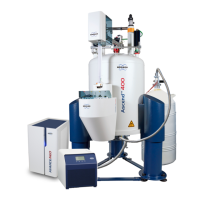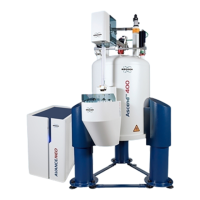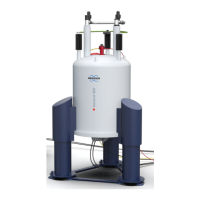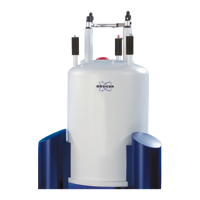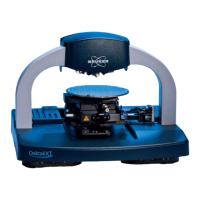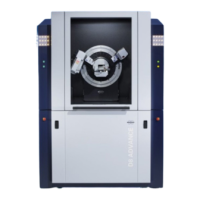Safety
14 H157655_1_008
2.3 Ventilation
Typical NMR superconducting magnets use liquid cryogens as cooling agents. During normal
operation of the magnet system it can be expected that a boil-off will occur:
• A normal boil-off of liquids contained in the magnet will occur based on the established
boil-off specifications.
• A boil-off of cryogens will occur during regular refills.
A very large increase in volume accompanies vaporization of the cryogenic liquids into gas.
The cryogenic gas to liquid volume ratio for helium is 740:1. Due to this large increase in
volume the vapor may displace the air in an enclosed room. If someone is in the room, this
may lead to asphyxiation. To prevent this and other dangers, the following minimum general
safety rules concerning ventilation apply:
• Cryogenic liquids, even when kept in insulated storage dewars, remain at a constant
temperature by their respective boiling points and will gradually evaporate. These dewars
must always be allowed to vent or dangerous pressure buildup will occur.
• Cryogenic liquids must be handled and stored in well ventilated areas.
• Exit doors must open to the outside, to allow safe exit in the event the room becomes
pressurized by helium gas during a magnet quench.
• Room layout, ceiling clearance and magnet height must be such that an easy transfer of
liquid nitrogen and helium is possible. This will considerably reduce the risk of accidents.
2.3.1 Regular Ventilation
Regular HVAC systems should be able to handle 3 - 5 room air exchanges per hour, and
provide temperature stability of +/- 1°C per 24 hours for 300-500 MHz systems, and +/- 0.5°C
per 24 hours for 600 MHz and above,. Please refer to HVAC (Heating Ventilation Air
Conditioning) [}65] for more details.
2.3.2 Emergency Ventilation
Depending on the actual size of the magnet room, a large amount of He and/or N
2
gas could
displace the air in the room. This is possible during the initial cooling of the magnet, during
follow-up cryogen fills, or in case of a quench. Therefore, an emergency exhaust system may
be required to avoid asphyxiation. Please refer to the section Emergency Ventilation During
Installation and Quenches [}68], for more details.
Pits
As discussed in HVAC (Heating Ventilation Air Conditioning) [} 65], continuous air flow
(exhaust) is required within the confines of a magnet pit. A low exhaust down in the pit is
recommended. Additional emergency ventilation may also be necessary. Since nitrogen gas
cannot be detected by the human senses, an oxygen sensor mounted in the pit will trigger an
increased rate of exhaust.

